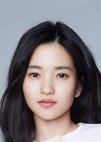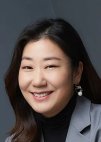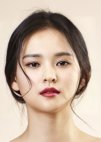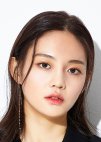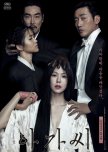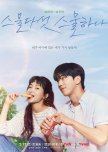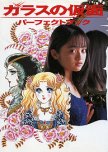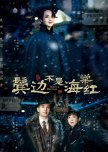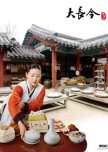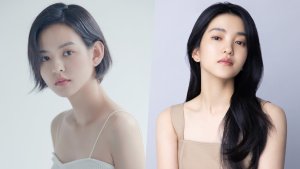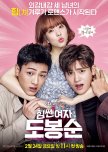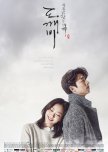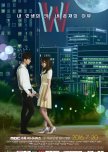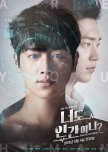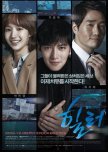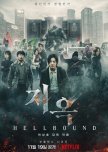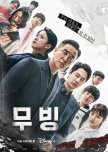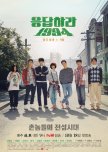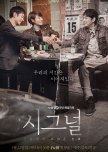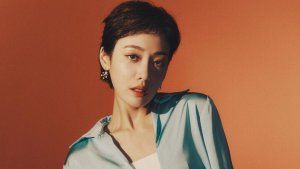 Kim Hi Eo Ra's agency gives update about the actress' school violence controversy
Kim Hi Eo Ra's agency gives update about the actress' school violence controversy - Nederlands
- ภาษาไทย
- Русский
- Türkçe
- Oorspronkelijke titel: 정년이
- Ook gekend als: Jeongnyeoni , Jeong Nyeon
- Regisseur: Jung Ji In
- Scenarioschrijver: Choi Hyo Bi
- Genres: Muziek, Leven, Jeugd, Drama
Waar je Jung Nyeon kunt bekijken
Subscription (sub)
Cast & Credits
- Kim Tae RiYun Jeong NyeonHoofdrol
- Shin Ye EunHeo Yeong SeoHoofdrol
- Ra Mi RanKang So BokHoofdrol
- Jung Eun ChaeMoon Ok GyeongHoofdrol
- Kim Yoon HyeSeo Hye RangHoofdrol
- Woo Da ViHong Ju RanHoofdrol
beoordelingen

and isnt the whole point of the show that shes poor but blessed with a voice gifted from the heavens?? so the only nepotism that she has is her voice inherited from her mother, like brotha are you fr
glad you dropped the show because you don't deserve to watch it, loser
Anyway, that just irked me a little so i had to say something.
i'm really glad this is a female-centered drama because you rarely see those these days and admist korea's uhhh lets just say gender problem.
i am disappointed they removed jeongnyeons gf from the drama but considering koreans censorship this is alr pretty decent ig
actors are casted well. ive always been a fan of kim taeri and she always does a great job. and jung eunchae is really fine lmao.
personally ive never been interested in traditional korean singing but this show keeps me intrigued and i do look forward to future episodes.
will probably update later but thats all i have to say for now
edit: okay just finsihed the show and i must say the acting was soooo good like definitely award worthy. shin yeeun is really an incredible actress and woo davi too like wow their skills are genuinely top tier
i really respect the effort the cast put into the show, like the vocal training, dance lessons, etc.
a few things that i was not happy about was some of the writing, like yes they took out jeongnyeons gf which is bad already but i did not like how they wrote hyerang too. there are a few plot holes and even though the ending is alright like its appropriate i guess, but its not satisfying enough and i think we need at least a prologue.
however i am actually very grateful for this drama like its not very often where a kdrama as an all female reoccuring cast like this is probably the only one i can name and i did thoroughly enjoy watching this show. i hope they do make more shows like this in the future and i will cherish this drama for the rest of my life.
Vond je deze recentie nuttig?

unterwegsimkoreanischenD
27 mensen vonden deze beoordeling nuttig
Deze recentie kan spoilers bevatten
One of the exceptional productions of 2024 in several ways
"Jeongnyeon: The Star is Born" is one of the exceptional productions of 2024: exceptional in terms of the subject matter and the rather specific cultural background, as the KDrama celebrates two very South Korean art forms: the post-war all-female performance theater Gukgeuk and Pansori, a chanted epic narrative rooted in Korean culture. Exceptional also, because this KDrama creates a women's space in which women play the decisive role and are explicitly NOT reduced to their gender role. Finally, exceptional when it comes to the acting performance: in this case in two respects, as the highly committed actresses present us a show within the show. Definitely worth seeing. (At least, I´d say…)The international title is perhaps a bit misleading, because actually no one is 'born' as a Gukgeuk star. This is hard work, even for those who may be born with talent. That is exactly the theme of the story of this KDrama. The historical setting of the 1950s may seem old-fashioned - who cares about such a special theater movement that was there only for a few decades and has by now been almost forgotten? No way! The topic obviously is quite on. The South Korean audience is thrilled. In the viewer statistics, the numbers have multiplied over the 12 episodes. No wonder, because the plot itself could easily be set today, 2024. The Gukgeuk training is actually comparable to the modern KPop idol industry. Accordingly, individual struggles with personal limits and challenges, the dynamics of relationships, as well as competition, infatuation, friendship, love-hate relationships, envy, self-doubt, overestimation of oneself and ultimately the overexploitation of one's own strengths and possibilities are practically timeless.
But due to the fact that these personal processes of the protagonists are located back in the 1950s, they simultaneously bring the art form of pansori and the flowering of the (now almost forgotten) gukgeuk to radiantly fresh, rousing life. By introducing us to three generations of gukgeuk and pansori stars and bringing them closer to us emotionally, we get a lasting impression of the extraordinary South Korean cultural heritage. (If you are interested, see the side note below.)
The original title is just "Jeongnyeon". The story is based on a well-researched webtoon. While the webtoon focuses on the main character and her personal development processes, the KDrama focuses on the relationships that shape Jeongnyeon on her path as well as the other women, young and old alike. The KDrama "Jeongnyeon: The Star is Born" vividly embodies the quality and the (short) history of Gukgeuk using the example of three generations of Gukgeuk artists. Wonderfully done so. The webtoon also achieved this in 2019, and was even specifically awarded by the Ministry of Culture for the outstanding quality of the story and also for its contribution to raising awareness of gender equality in South Korea.
Kim Tae-ri leads a fantastic ensemble. But even if she once again surpasses herself here, she is not alone, but the whole, which is more than the sum of its parts – just as the show on the Gukgeuk stage is a co-creation in which everyone takes contributes as best as they can, according to their role and tasks, so that something great can come of it. And so all the ladies contribute in their own unique way to the success of this fantastic production.
------------------------------------------------------------------------------------
--- SIDE NOTE: Pansori ----
Pansori is almost unique: a very old form of epic narrative singing that goes back a long way in Korean cultural history and is able to generate maximum emotional charisma using minimalist means. This requires one person to tell a story by singing and one person to beat the drum. The emotional power of the different dramatic moods is characterized by a stylized repertoire of vocal use and expressive performance. This in combination with the equally characteristic rhythms of the drum beat. A one-person opera in which one person plays ALL the roles, so to speak.
The roots of the idiosyncratic sound in combination with the drum go back to Korean shamanism. In the 17th century, it became an art form in its own right to captivate people with a wide variety of stories in street theater. This is also what the name “Pansori” refers to. "Pan" means a place where people come together, while “Sori” means the expression of the voice, the singing. By the 19th century, pansori had the attention of the upper class and was formally refined. It is about the stories that have shaped the lives of people on the Korean peninsula for centuries – highly dramatic and emotionally expressive. It´s fueled by the relationship being established between narrator and audience. No monologue, no lecture. Rather, narrator and audience meet in the intimate, emotionally honest, vulnerable space that the story opens up - in compassion for its protagonists.
Not everyone can just do pansori. This narrative singing is special. The training is hard. In addition to singing, there is a repertoire of facial expressions, gestures and forms of movement that are given in their structure but must be completed individually. Characteristic of the incomparable singing is the anhemitonic pentatonic scale used, in which the semitone steps E to F and B to C are missing. This is used in different emotionally colored modes, each of which is defined by a specific pitch. Frequency, ornamentation and emphasis emphasize the different emotional states even more. The rather hoarse voice quality is also characteristic, especially in the lower octaves. A clear voice is not required in Pansori. The falsetto technique is used for the higher pitches.
Since the 1970s, pansori has had state-recognized status as a Korean cultural asset in the country, and since 2003 it has also been officially listed by UNESCO as an intangible cultural heritage.
--------------------------------------------------------------------------------------
--- SIDE NOTE: Gukgeuk ---
Gukgeuk is not that well known and is not particularly protected as a Korean cultural asset. Gukgeuk refers to purely women's theater for music and theater performance. An art world, a theatrical art creation created exclusively in women's spaces. The women also took on the men's roles. In the post-war years, Gukgeuk was extremely popular in South Korea. The fan cult was in no way inferior to today's idol fan cult. However, not much of that remains today. The Gukgeuk theater performance began as a purely women's theater in the 1940s. It reached its peak in the 1950s and 1960s. But then the decline followed closely with the growing of the film industry, because there the tried-and-tested stars could earn more and the reach was also greater.
Gukgeuk is characterized by traditional Korean performing art forms and in particular pansori, but combines elements from theater, music, song and dance in an idiosyncratic way, like a quintessence. In contrast to traditional Korean opera (Changgeuk), in which men and women perform aside, Gukgeuk places greater emphasis on high quality acting. Expression, grace in movement, facial expressions, all of this is integrated more finely and intensively into the performance. That’s where all-female production comes into play. A great voice alone is not important with Gukgeuk. Rather, it is the ability to embody the mood of the story sensitively and authentically, to emotionally resonate with the audience and to carry them along uncompromisingly, catapulting them out of their everyday world and instead drawing them into the story with all its emotional facets.
The women were celebrated as stars. They were celebrated as artists. Some were perfected in their appearance, language and behavior for the male roles. The Gukgeuk artists were able to experience themselves outside of their gender roles.
Vond je deze recentie nuttig?



